If you are thinking about doing the Blue Ridge Parkway drive, then you’ll want to take a look at this awesome Blue Ridge Parkway itinerary. The Blue Ridge Parkway is one of our favorite places to explore in the South and you’ll quickly see why. Along the drive you’ll see absolutely gorgeous views, be able to stop in unique and charming towns, and experience one of the most beautiful areas of the Southern USA.
With so much to do and see, this is a road trip where you’ll be able to pack in a lot in one day. Of course, you can always customize your Blue Ridge Parkway drive to fit your needs and likes. But this is a great itinerary if you want to see a little bit of everything the area has to offer. So, let’s go over some basic information and tips about driving the Blue Ridge Parkway.
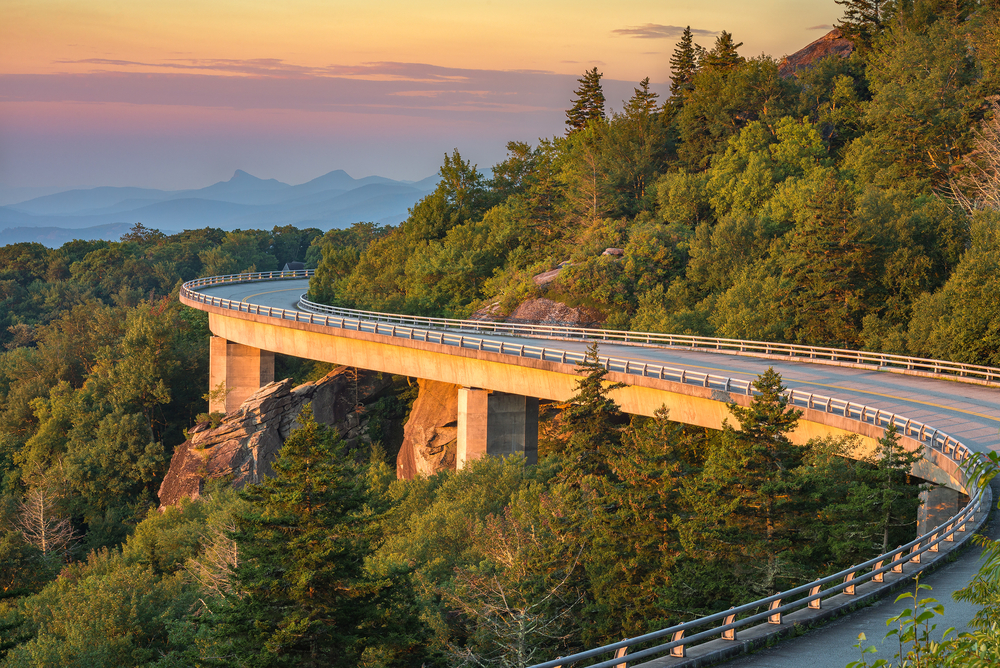
Blue Ridge Parkway Drive: The Ultimate Road Trip!
Where Is The Blue Ridge Parkway?
The Blue Ridge Parkway starts in Northern Virginia, just south of the Shenandoah Valley. It was originally made to connect Shenandoah National Park in Virginia to the Great Smoky Mountains Park in Tennessee. To do that, it crosses through 29 counties in Virginia and North Carolina.
In North Carolina, the Parkway mostly runs along the spine of the Blue Ridge Mountains, which are a part of the Appalachian Mountain range. As it winds through the mountains of North Carolina it passes many major cities and popular towns in the area. This is part of the parkways tourist appeal.
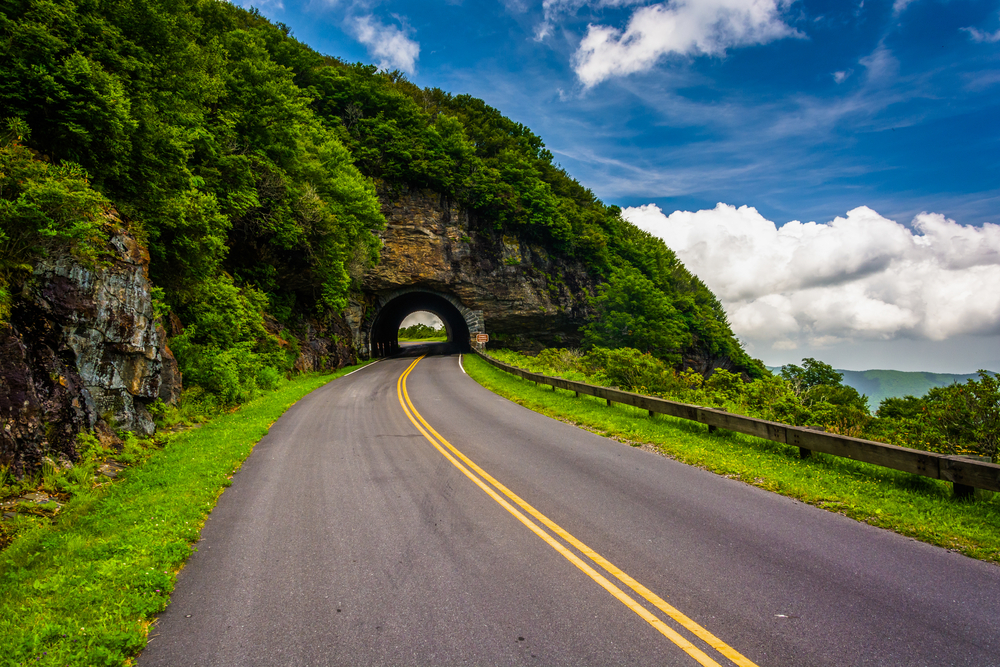
How Long Is The Blue Ridge Parkway?
From Northern Virginia to Southwestern North Carolina the parkway runs for 469 miles. The majority of the parkway is a two-lane undivided expressway. The standard speed limit is 45mph, with it lower in some places, but never higher than that.
There are mile markers all along the parkway that you can use when planning your route. On maps of the parkway you will find overlooks, visitor centers, and interchanges marked with the milepost number for easy navigation. There are several areas along the drive where there is no cell service, so either a paper map or downloading a map is always a good idea.
Something else to keep in mind is that the parkway itself does not have many amenities. Every so often you will need to hop off the parkway to get gas, explore one of the cool towns or cities, and grab a bite to eat. In those areas, you will most likely find decent cell service or WIFI. Make sure you plan stops accordingly, you don’t want to run out of gas or supplies while you’re on the parkway.
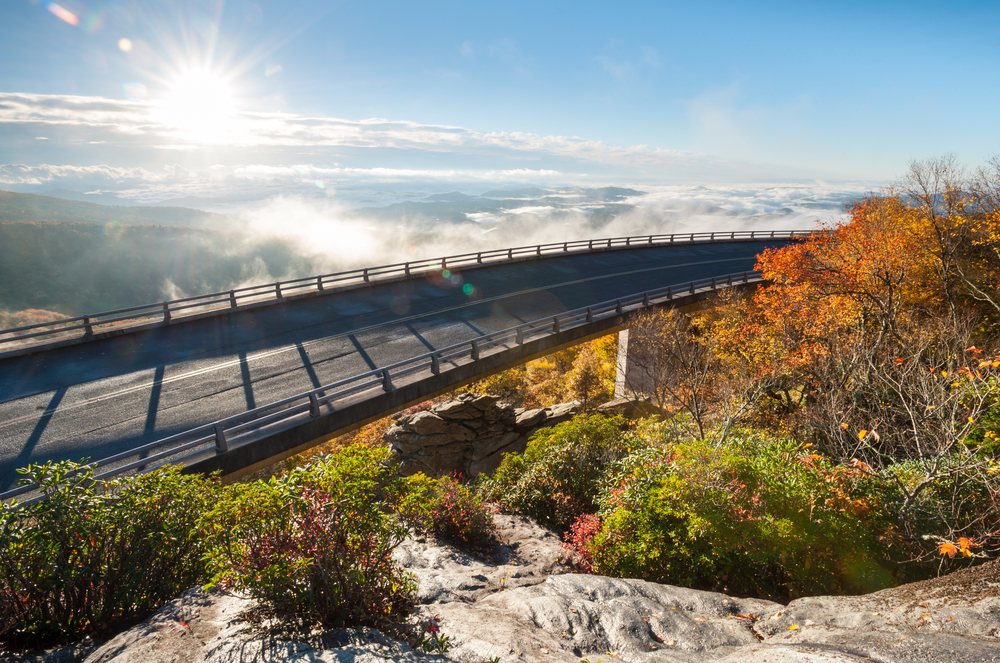
How Many Days Should You Spend Driving The Blue Ridge Parkway?
That really depends on how many stops you want to make and what you want to see. You can easily spend a week driving the Blue Ridge Parkway. On this itinerary, we’ve planned for four days with two optional additional days. If you want to see absolutely everything on the parkway, a week is the perfect amount of time.
If you don’t have time to fit everything in, you could also easily enjoy driving the Blue Ridge Parkway in three to four days. Three to four days on the parkway still gives you enough time to see the highlights with fewer stops for extra things like different hiking trails. On our itinerary we’ve included a mixture of hiking and town stops so you get to experience a little bit of everything in the area.
You could also drive the entire 469 miles in one day if you really wanted to. Driving straight on the parkway, without any stops or getting off the parkway to see any of the nearby cities and towns would take about 6 hours. If you wanted to do this, we would still suggest stopping at some of the beautiful parkway overlooks that are scattered down either side of the road.

When Is the Best Time To Drive The Blue Ridge Parkway?
You can drive the Blue Ridge Parkway pretty much anytime of the year. It is busiest during the Summer months and during Peak Week in the Fall. Peak Week is the week when the fall foliage on the parkway is at it’s absolute best. That usually is in the first few weeks of October, and you will find the parkway packed during this week. But if you don’t mind the crowds, it is a beautiful time of year to visit.
Overall, Spring, Summer, and Fall are the most popular times of the year to have a Blue Ridge Parkway road trip. You can visit in Winter, but the roads are generally not maintained during the Winter months. This means that when it snows, the National Park Service does not plow the parkway. It can also get very icy, which can make a Winter parkway drive a bit dangerous depending on the weather. If you do plan to go in the Winter, plan accordingly and be prepared to cut your trip short if conditions get bad.
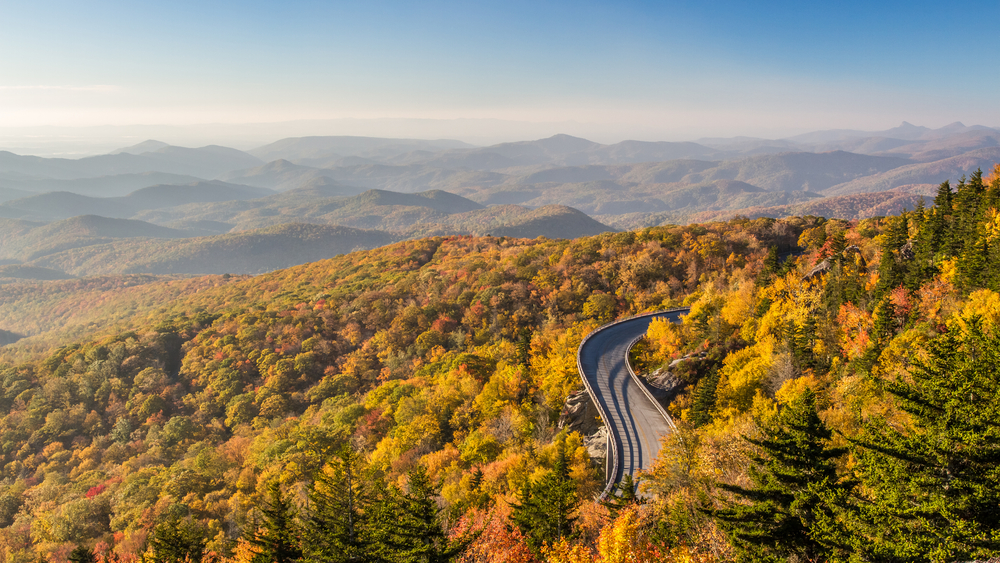
Blue Ridge Parkway Road Trip Map
You can take a look at the Blue Ridge Parkway map below to give you a mental picture of what some of the stops are going to look like! This will show you the ground that you will cover! You can even download this map of the Blue Ridge Parkway onto your phone so that you can save it for reference at a later date!
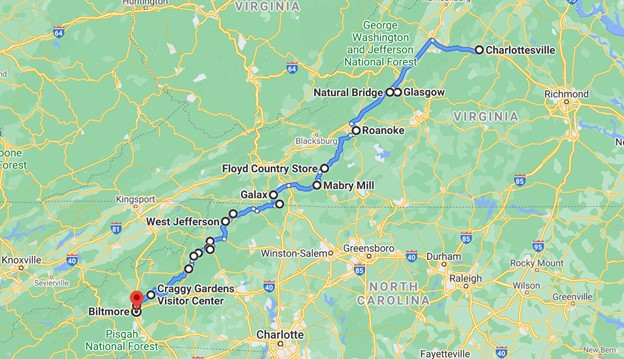
The Ultimate Blue Ridge Road Trip Itinerary
Arrive In Northern Virginia
You can start your Blue Ridge Parkway road trip in either Virginia or just outside of Tennessee and the Great Smoky Mountains National Park. We’re going to start in Northern Virginia, just outside of Charlottesville. Charlottesville is in the foothills of the Blue Ridge Mountains and has an airport that you can fly in to. Its also about 30 minutes from the Blue Ridge Parkway North Entrance.
Depending on when you get to Charlottesville, you can either immediately head out onto the parkway or explore the area. If its too late in the day to start your road trip, consider checking out the city and Thomas Jefferson’s Monticello.
Hotel In Charlottesville: booking.com
VRBO in Charlottesville: VRBO.com
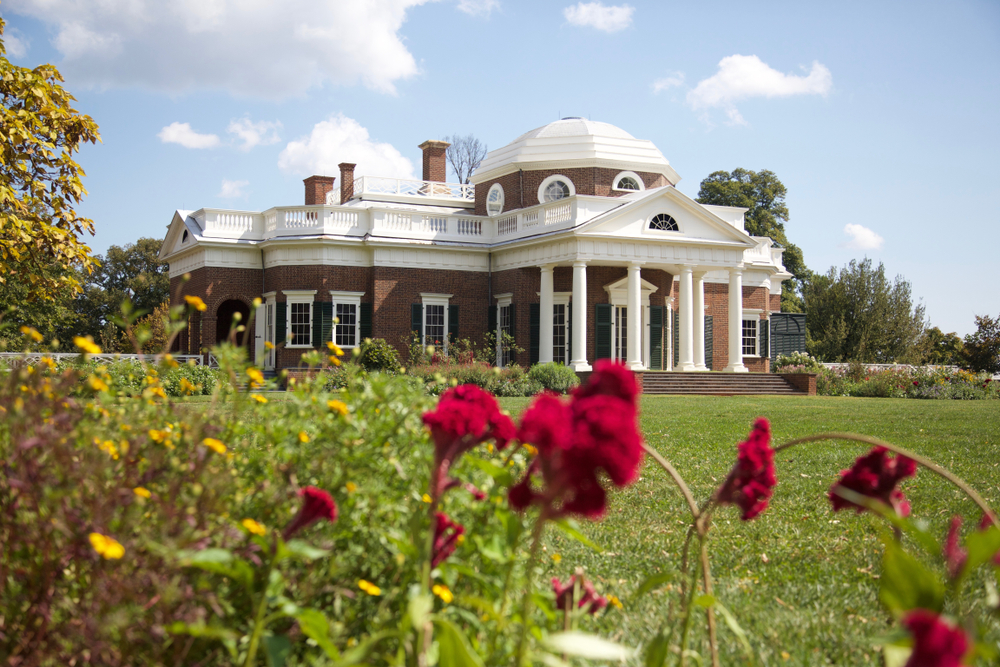
Day 1: Charlottesville to Roanoke
Start your first day by driving from Charlottesville to the Blue Ridge Parkway North Entrance, which is about 30 minutes away from the city. You’ll spend most of the day on the Parkway, but you’ll get off the Parkway at a few spots to explore some cute towns in the area.
Stop 1: Humpback Gap At Milepost 6
Your first stop on the Blue Ridge Parkway is at Milepost 6. At Milepost 6 you’ll find the Humpback Gap Parking Area. The Humpback Gap was a popular stopping and camping area for waggoneers during the late 1800s into the early 1900s. Now in the area you’ll find a collection of 19th century farm buildings.
There are also several hiking trail heads at this milepost. Most of the trails at the milepost are loop trails, which means you follow them in and it loops around and out. They are moderately trafficked and most are good for all skill levels. You’ll also be able to say you hiked part of the Appalachian Trail as the trails at Milepost 6 are connected to the Appalachian Trail.
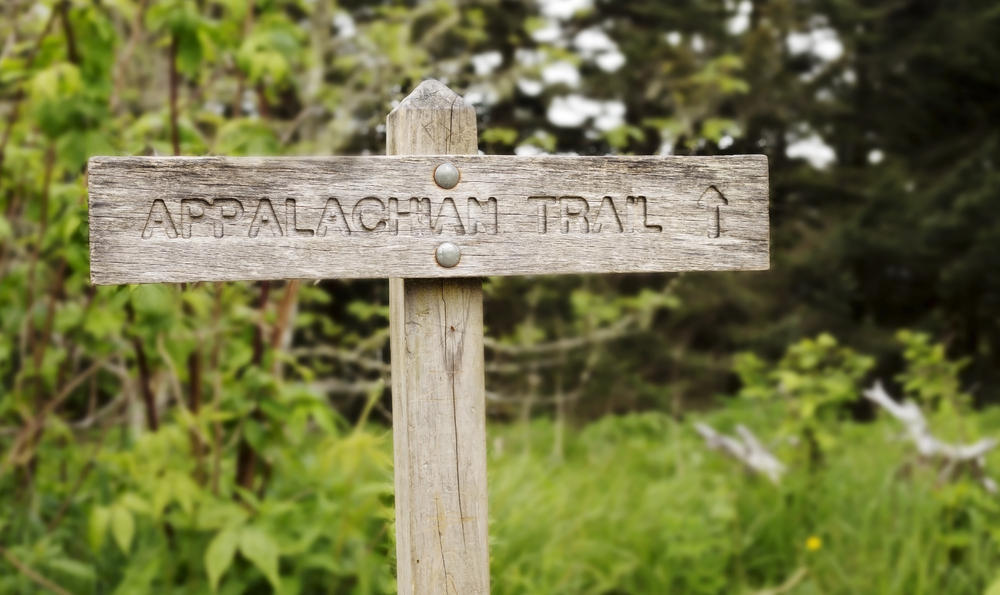
Stop 2: Stop For Lunch In Glasgow
After enjoying a hike, head briefly off the Blue Ridge Parkway to the town of Glasgow. Glasgow is home to a hidden gem, Layne’s Country Store. Open since 1954, Layne’s is a classic mountain country store that is fun to explore. It’s also a great place to grab a quick lunch.
They offer made to order sandwiches as well as fresh produce. You can also browse their selection of fresh pastries, jams and jellies, apple butter, and even old fashioned hoop cheese. Enjoy your lunch and consider taking a snack for the road before heading back onto the parkway.
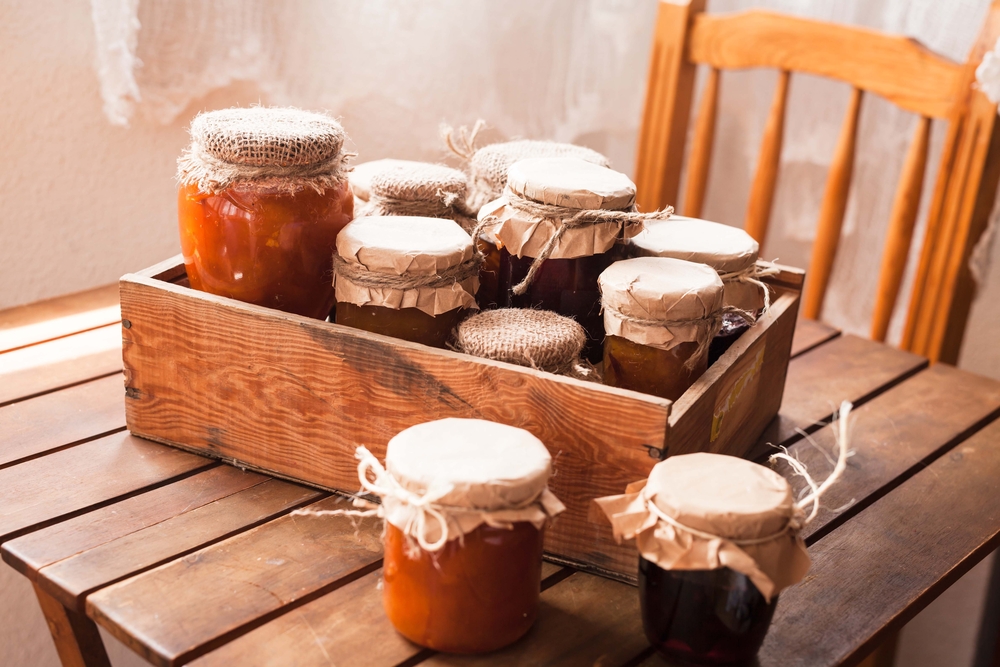
Stop 3: The Natural Bridge State Park
To get to the Natural Bridge you’ll want to drive another 10 minutes from Layne’s on US-11, so you aren’t getting back on the parkway just yet. The Natural Bridge is often considered one of the 7 Natural Wonders of the Modern World. The area was once owned by Thomas Jefferson, was worshiped by the Monacan Indians, and was one of George Washington’s favorite places to survey.
It is a rock arch carved by nature that crosses above the Cedar Creek. At the State Park, you’ll also find plenty of hiking trails, a visitor’s center, caverns and a Monacan Indian Living History Village. The Natural Bridge is a great place to stop and explore before heading back onto the Blue Ridge Parkway.
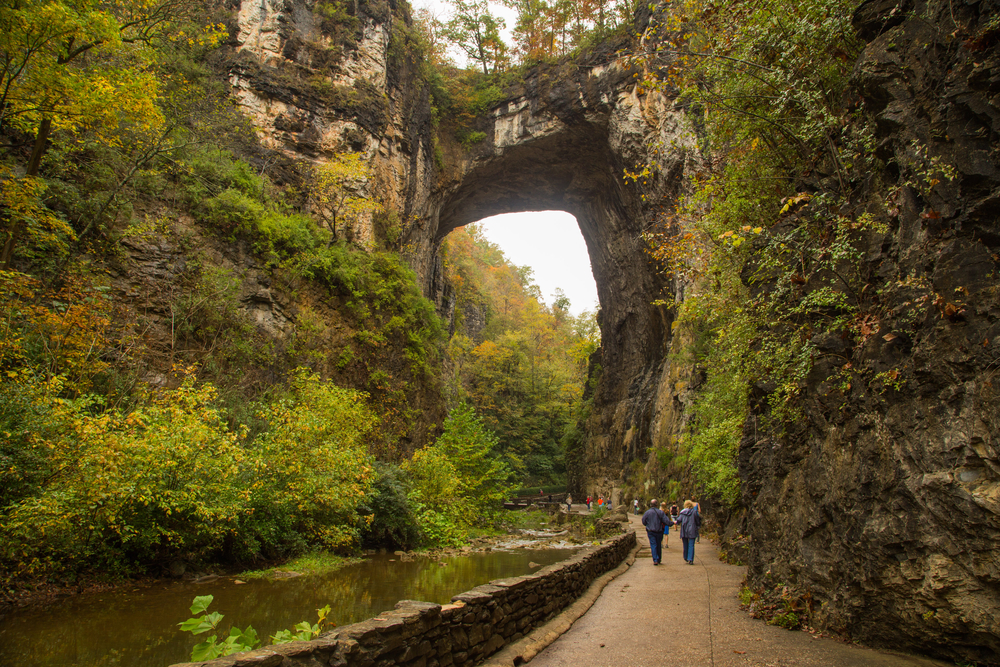
Stop 4: Explore Roanoke
Once you are back driving on the Blue Ridge Parkway, make your way to Roanoke. Along the way, you’ll pass plenty of beautiful overlooks. If you have the time, make sure to stop at the ones that look the most interesting to you. When you get near Roanoke, hop off the parkway and head into the city.
While you’re there, explore the downtown area. There are plenty of boutiques, interesting antique shops, and more to check out. You can also enjoy galleries filled with local artists work. Roanoke is the perfect stopping point for dinner as there are a ton of options to choose from. After you’ve stretched your legs, had a good meal, and maybe even found a souvenir or two, get back on the Blue Ridge Parkway.
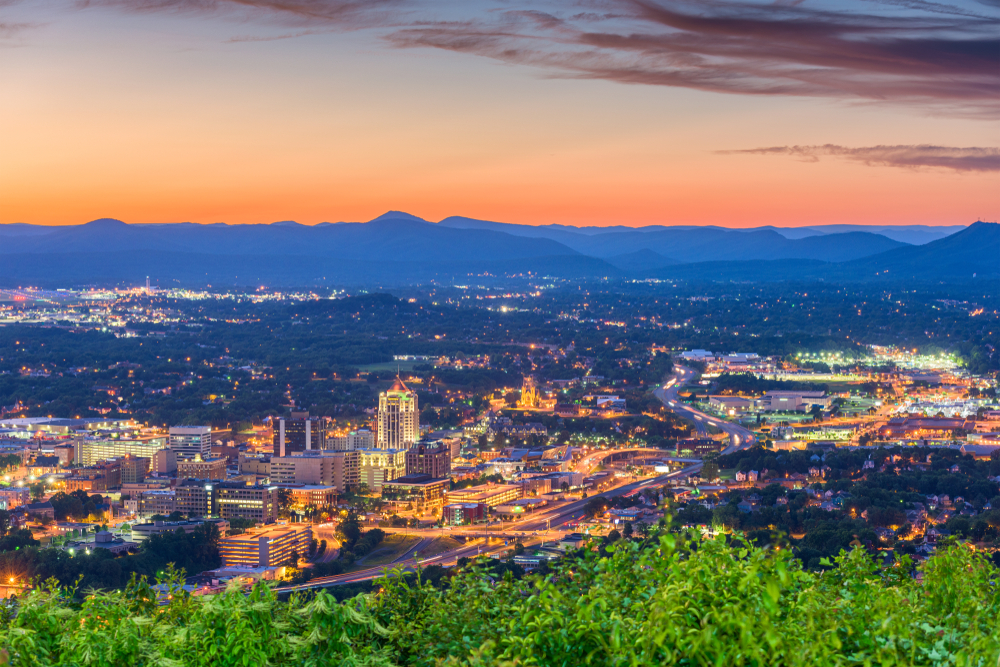
Stop 5: Spend The Night In Historic Floyd
You’re going to end your first night on the parkway in historic Floyd. Floyd is a small town in Virginia near the Virginia and North Carolina border. Day two on your Blue Ridge Parkway drive is packed with things to do, and Floyd is perfectly located to start the day. The cute town is also home to quite a few boutique and unique hotels and inns to stay at. If you have the time, check out Floyd’s Country Store. On some nights the store gets turned into a place for locals to hangout and dance.
Hotel in Floyd: booking.com
VRBO in Floyd: VRBO.com
Day 2: Floyd, Virginia to Boone, North Carolina
On your second day of this Blue Ridge Parkway itinerary you’ll stay pretty busy. There is a lot to explore in this area as you cross into North Carolina. The North Carolina section of the parkway is the most visited because there is just so much to do and see on this portion of the drive.
Stop 1: Start The Morning At Mabry Mill
Start the morning on the Blue Ridge Parkway and head to Milepost 176 where you’ll find the Mabry Mill. Mabry Mill has long been one of traveler’s top stopping points on the parkway. It is a picturesque water-powered mill that was built in the early 1900s by Ed Mabry. On the property, there is also a restored sawmill, a whiskey still, and even a working blacksmith shop.
The mill also has a restaurant which is known for it’s amazing breakfast. The flavors range from sweet potato, cornmeal, buckwheat, blueberry, and apple pancakes. Breakfast is served all day, but a morning at Mabry Mill is a perfect day two of your Blue Ridge Parkway drive.
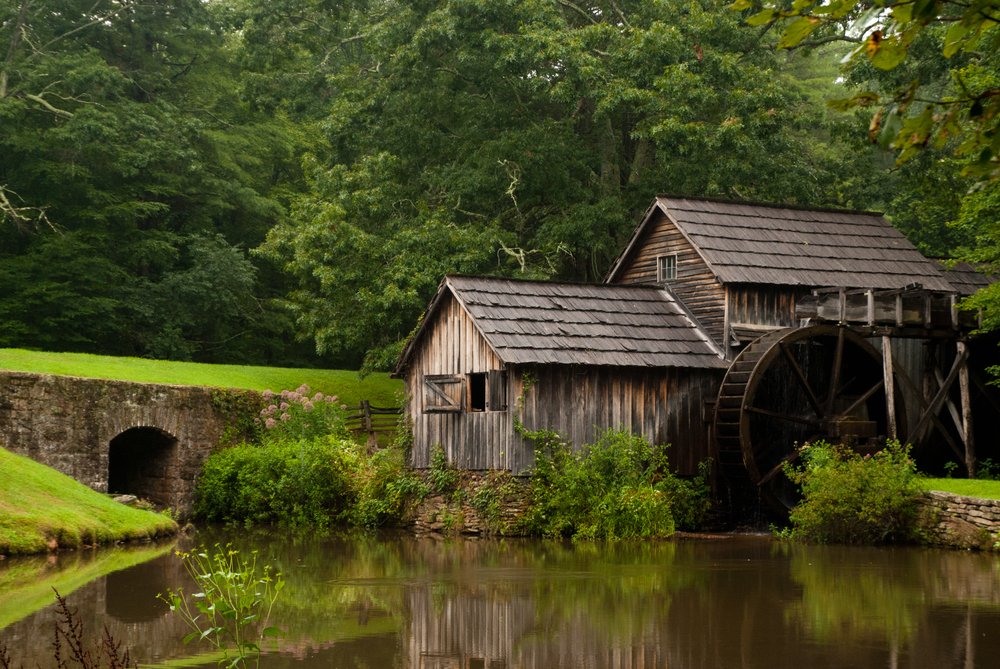
Stop 2: Explore The Town Of Galax
Continue down the parkway and hop off when you get close to the town of Galax. Galax is often called the gateway to the Blue Ridge Mountains and is your last town stop in Virginia. The town is full of things to do and is known for it’s connection to art and music.
Depending on when you visit, you may be able to enjoy one of the many music festivals or conventions that take place in the town. There is also a living history museum, a museum with Civil War and Native American artifacts, and plenty of unique shops to explore. When you are ready to leave Galax, hop back on the parkway towards your next destination.
Stop 3: The Blue Ridge Music Center At Milepost 213
Just outside of Galax on the Blue Ridge Parkway at Milepost 213 is the Blue Ridge Music Center. The music center is dedicated to preserving the history of Appalachian music heritage. While there you’ll be able to experience the rich culture of folk music and dance from the Appalachian area.
In the Summer months, you’ll be almost guaranteed to catch a live performance. Musicians perform daily in the center’s breezeway. There is also a 3,000 person outdoor auditorium that host local and national musicians frequently. The Blue Ridge Music Center is great way to learn a little bit more about the European immigrant impact on the area’s history and music.
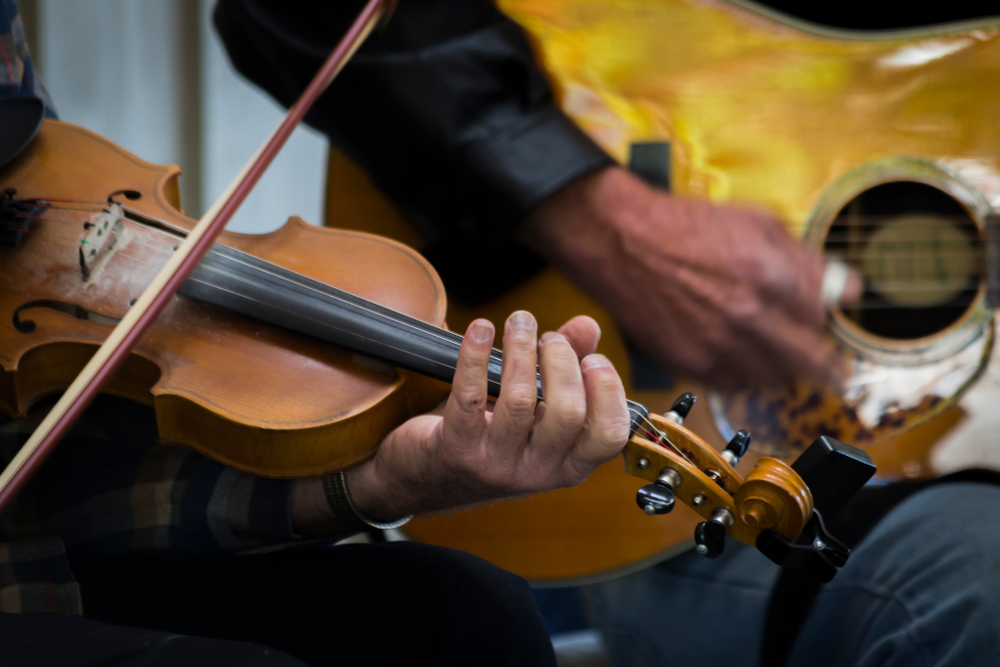
Stop 4: Get Lunch At Shatley Springs
Continue on driving the Blue Ridge Parkway for another hour, and stop at any of the overlooks along the way that intrigue you. You’ll be spending the rest of the day mostly off the parkway exploring the towns around the parkway, so enjoy the drive. You can use the Blue Ridge Parkway to get around to the rest of the stops, but it may be quicker to use the local expressways.
You’ll want to exit when you see the sign for Shatley Springs Road. Take the exit, and on the left you’ll come up the best kept secret in the area. Shatley Springs is a family style country restaurant built on the land where Martin Shatley claimed to be healed after drinking from the water in the Spring. It became somewhat of a local legend, and people began traveling from all around to experience the magical waters.
The modern day restaurant and inn doesn’t advertise the supposed magical waters, but it is known for it’s amazing food. You’ll be served family style with heaping plates of true Southern classics like country ham, fried chicken, mac and cheese, creamed corn, and baked apples. They also give you biscuits, cornbread, and a seasonal dessert.
Shatley Springs is pretty popular, so you may have to wait if you don’t make a reservation ahead of time. But anyone you ask will say it’s worth the wait.
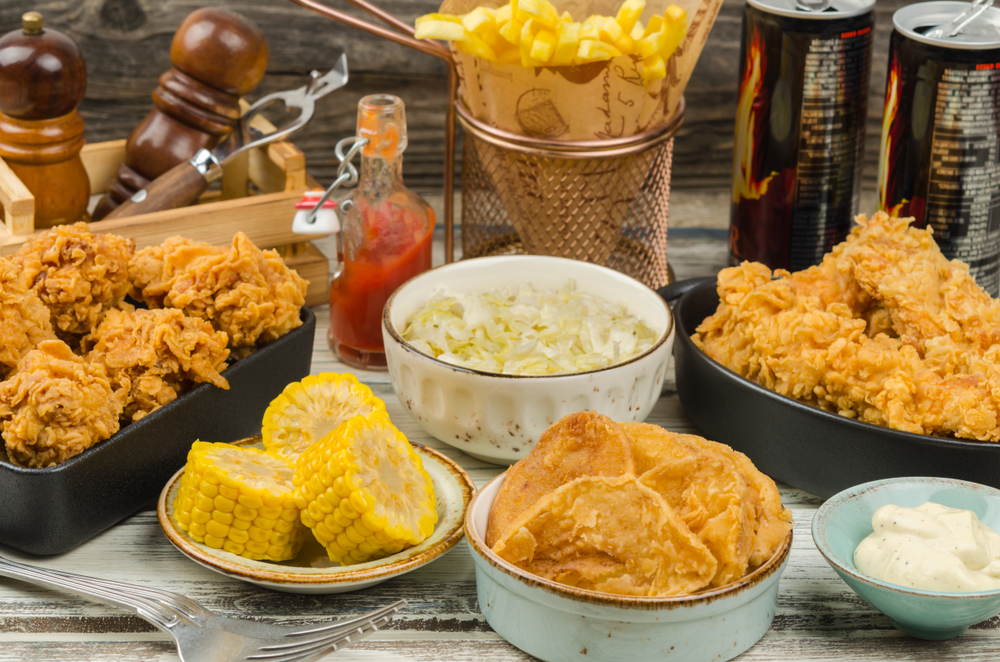
Stop 5: Explore The Town Of West Jefferson
After filling up on some amazing food, continue on to the cute town of West Jefferson. The main attraction in West Jefferson is it’s charming main street. You’ll find boutiques, ice cream parlors, a cheese factory, and even a tea shop to explore.
The town also has several antique stores, so if that is your thing, make sure to plan enough time to explore all their treasures. West Jefferson is perfect for strolling down the street and digesting after the huge meal you just ate. You’ll be glad you stopped to enjoy it, even if just for a brief visit.
Stop 6: Explore The Town Of Boone
From West Jefferson, you’ll drive 30 minutes to the town of Boone. Boone is one of the cutest small towns in North Carolina and it’s main street is packed with cool shops, restaurants, and more. Boone is a college town home to the Appalachian State Mountaineers, and much of the campus is centered around the main street.
While there, make sure you stop at the Mast General Store and their Candy Barrel. You can buy large amounts of candy, some of it vintage and hard to find candies, by the pound. They also have a great outdoor gear store if you need to stock up on anything for the rest of your trip.
You’ll end day two in Boone, so take your time exploring the area. It is a great stopping point for your Blue Ridge Parkway drive because it has plenty of hotels for you to stay and lots of restaurant options. Your day isn’t done though, so grab dinner, and head to your last stop for the day.
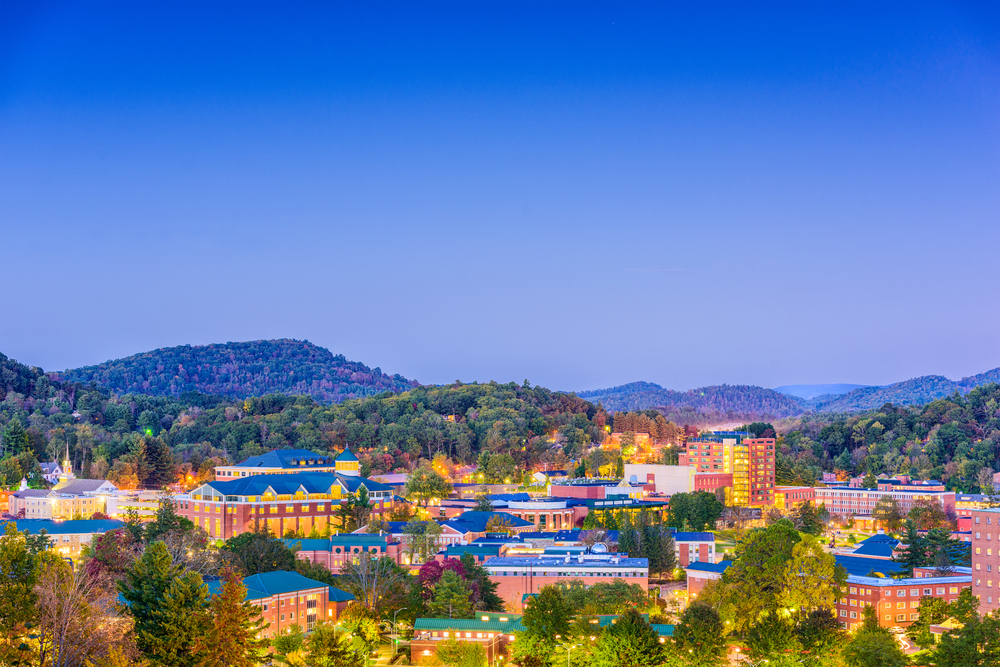
Stop 7: Enjoy The Nation’s Longest Running Revolutionary War Outdoor Drama
If you are visiting Boone in the Summer months, you don’t want to miss a showing of Horn in the West. Horn in the West is an outdoor play that centers around Daniel Boone, the Revolutionary War, and the European development of the Blue Ridge Mountains. Its a really cool way to learn a little bit more about the area’s history. Shows run from 8pm-10pm and have a brief intermission in the outdoor amphitheater.
Hotel In Boone: booking.com
VRBO In Boone: VRBO.com
Day 3: Boone to Asheville
On your third day of driving the Blue Ridge Parkway, you’ll spend most of the day on the parkway itself. There are a few stops where you’ll need to exit, but otherwise its a pretty simple Blue Ridge Parkway drive. There are quite a few stops though, so make sure you give yourself plenty of time to hit them all. As always, make sure you add in a few of the overlooks along the way.
Stop 1: Moses Cone Manor At Milepost 294.1
As you head towards Asheville from Boone on the parkway, your first stop will be at Milepost 294.1. Moses Cone Manor is a large manor home on the side of the mountain with views down into the valley. The manor gets pretty busy, pretty quick. During peak season, the entrance to the parkway near the Manor gets heavily backed up with traffic.
That’s why we are suggesting you plan your visit first thing in the morning. The crowds are likely to be thinner and you can get in some morning exercise on any of the nearby hiking trails if you want. If that’s not your thing, you can tour the Manor and learn more about the family that built it. The Manor also has a gift shop featuring local artists as the Moses sisters who called the Manor home were big supporters of the arts.
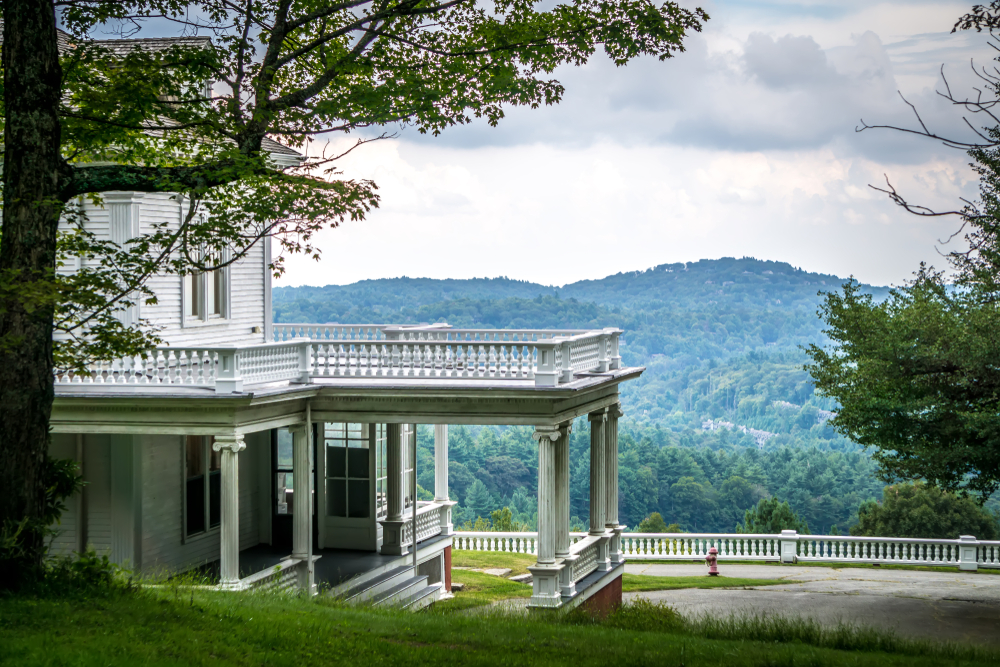
Stop 2: Explore The Town Of Blowing Rock And Grab Breakfast
After exploring Moses Cone Manor, continue along the parkway towards Blowing Rock. There are a few exits on the parkway for Blowing Rock, but you’ll want to take the exit for US 221 N to get to the main part of town. There, you’ll find some cute boutiques, lots of art galleries, and plenty of options for breakfast.
Take some time exploring the shopping district and then make your way to the actual Blowing Rock. It is located in a small park with a visitor’s center. The Blowing Rock is named for the way the wind seems to blow things back up the rock, towards the top of it. There is a walk out bridge you can take to get a better look of the rock itself and the valley and mountains in the distance. After learning about the Blowing Rock, hop back on the parkway and continue heading towards Asheville.

Stop 3: The Linn Cove Viaduct At Milepost 304.4
The Linn Cove Viaduct is easily the most recognizable landmark of the Blue Ridge Parkway. It adorns travel posters, signs along the parkway, and all kinds of Blue Ridge Parkway merchandise. As you approach the viaduct, you’ll see signs letting you know, and there are a few parking areas you can stop at. They all offer a different view of the famous winding bridge that hugs the side of the mountain.
If you want to explore the area further, there is a visitor’s center you can stop at. It tells the history of building the viaduct and explains what it is. There is also a hiking trail that takes you right under the viaduct, which is a pretty cool view.
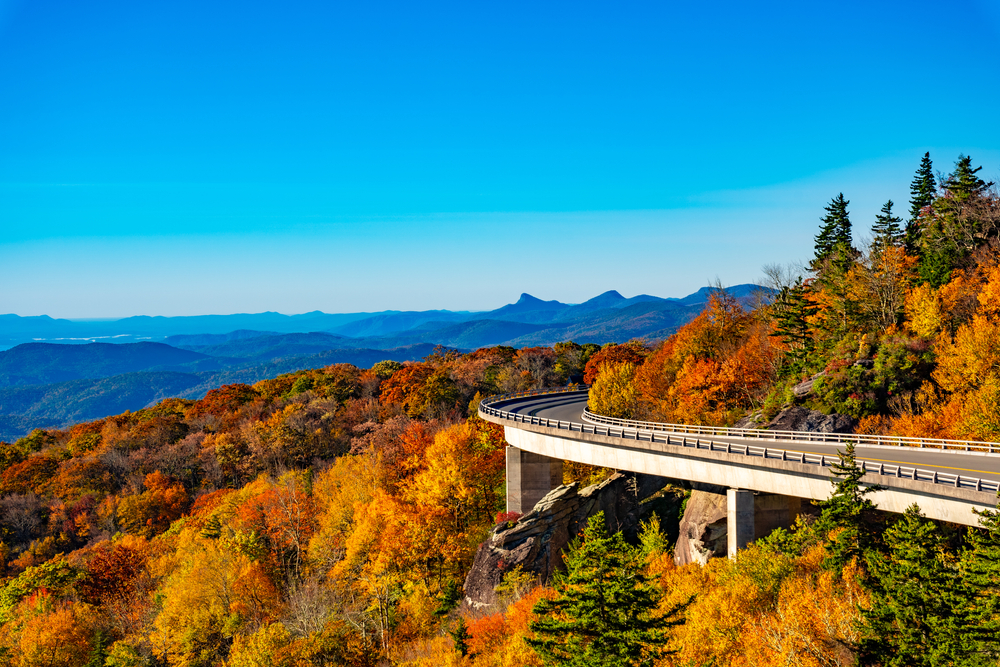
Stop 4: Grandfather Mountain At Milepost 305.1
As you admire the Linn Cove Viaduct, you’ll start to be able to see Grandfather and Grandmother Mountains. Grandfather Mountain is one of the centerpieces of North Carolina’s portion of the Appalachian Mountains. It is beautifully majestic and has been welcoming travelers for centuries.
There are a few different ways you can explore Grandfather Mountain. It is known for having some very treacherous hiking conditions, so it’s not a great option for beginner hikers. If you don’t want to hike it, there are several overlook points nearby that you can stop at. If you do want to hike on the mountain, or near it, you’ll want to back track on the parkway a little bit. Don’t forget to stop at Rough Ridge Overlook!
At Milepost 299 is the Boone Fork Parking Area the Daniel Boone Scout Trail takes you on part of the mountain. If you want more options, you can hop off the parkway and go to the Grandfather Mountain private attraction. You’ll have to pay to access some of the trails, and they are typically the more difficult ones, but it’s a cool experience. If you’re feeling really adventurous, try the Grandfather Trail and walk over the swinging bridge.
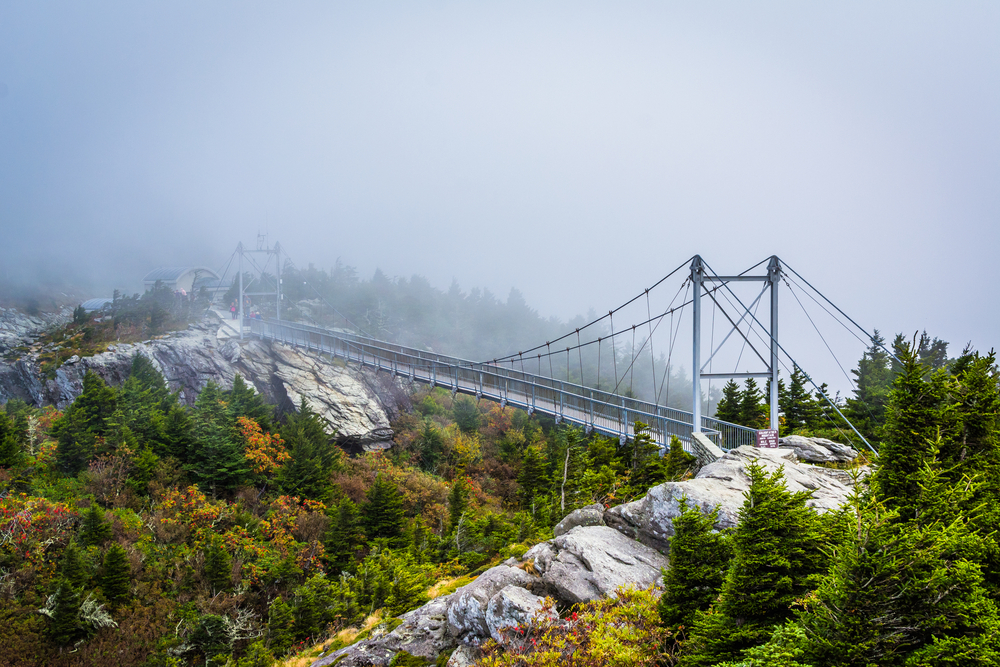
Stop 5: Lunch In Linville
After exploring Grandfather Mountain, hop off the parkway and grab lunch in Linville. It’s a small town, but it’s a popular area for parkway tourists to stay. You’ll find plenty of options for lunch and can relax a little bit before finishing your last stretch of the Blue Ridge Parkway drive for the day.
Stop 6: Hike Linville Falls At Milepost 316.4
When you are back on the parkway, head to Linville Falls at Milepost 316.4. The area is a popular one, so you may have to deal with some crowds. There is a small visitor’s center, places to picnic, and a few different trail heads. If you want to hike to see the falls, take the Linville Gorge Trail.
This is the trail that will give you views of the two waterfalls in the park. There is a smaller Fall that is accessed by taking the left fork in the trail. It leads down the rocky cliffs for views of the bottom of the falls where the water cascades and pools. If you take the right fork, you’ll hike up to the Plunge Basin Overlook, which has a view of the falls and the chimney rocks.
Both hikes are considered strenuous, but you’ll often see families with small kids on both trails. They are mostly uphill, so keep that in mind.
If you are nearby, consider checking out Linville Caverns too!
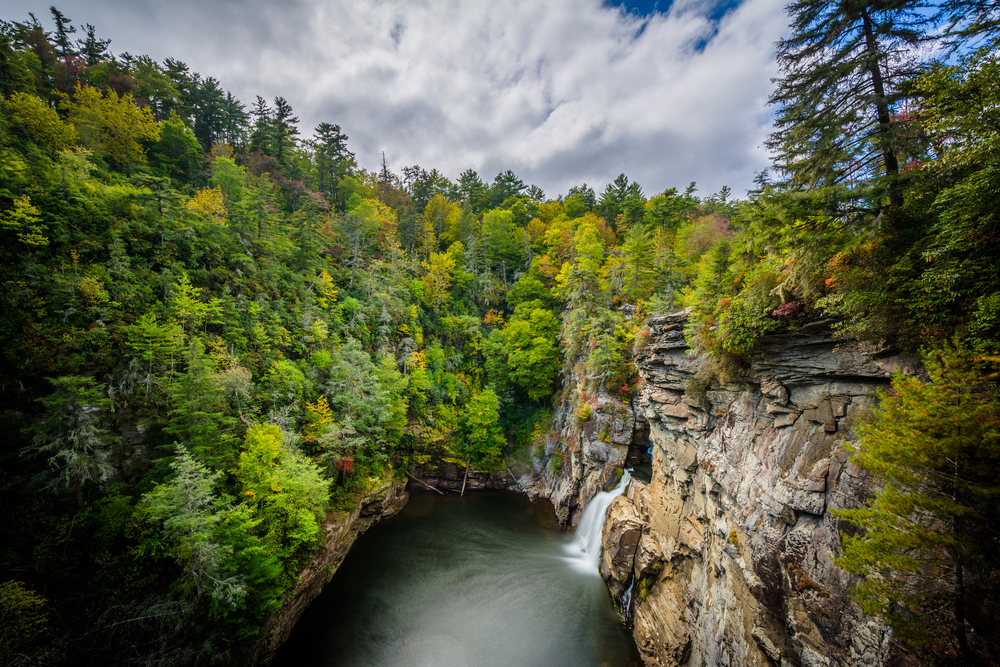
Stop 7: Explore Craggy Gardens At Milepost 364
Your next stop is much further down the parkway, so enjoy the ride and stop at any of the overlooks that interest you. At Milepost 364, pull into the parking area for Craggy Gardens. Craggy Gardens isn’t a typical garden though, and it is only named that because that’s what locals have always called it.
It is an area of the Great Craggy Mountains where there are massive portions of exposed rocks covered in wild rhododendron. The beauty of Craggy Mountains is best admired in June and July. However, during the rest of the Summer months the area is covered in other native wildflowers that are just as beautiful.
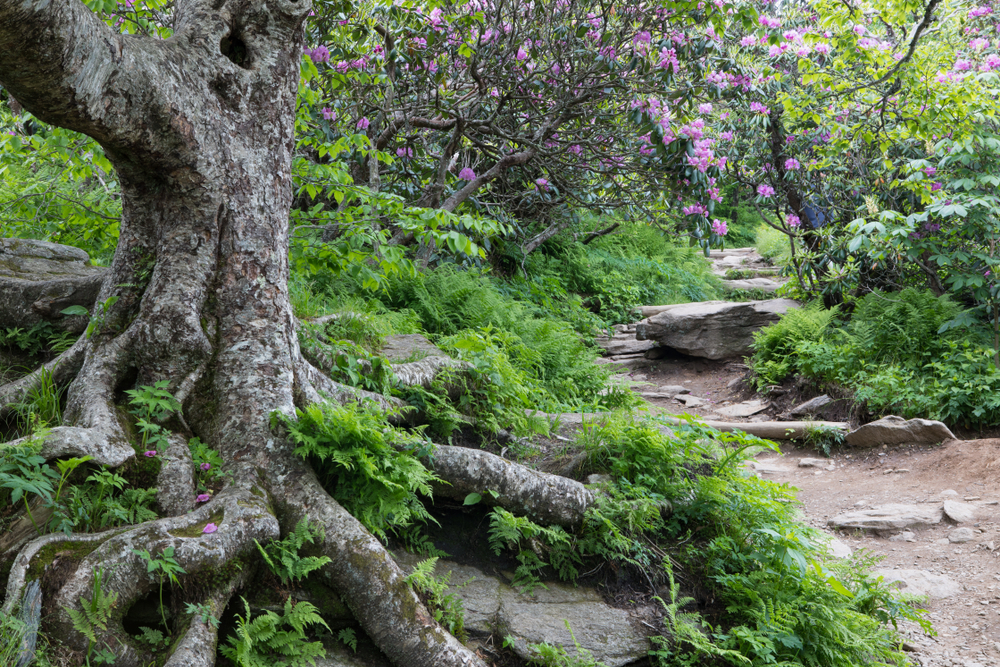
Stop 8: Arrive In Asheville For A Late Dinner
Finish day three in Asheville where you’ll grab dinner and rest for the night. Asheville is one of the larger cities in area, so you’ll find plenty of options for dinner. Popular restaurants are Jargon, which features classic American fare, The Gourmet Chip Company for quick sandwiches and deli eats, or Mamacita’s Taqueria for Southwestern bites.
The city is also known for it’s many breweries, which often have full menus. So no matter what you’re in the mood for, you’ll easily find something delicious in Asheville.
Hotel In Asheville: booking.com
VRBO In Asheville: VRBO.com
Day 4: Spend The Day At The Biltmore Estate
If you only have a few days to drive the Blue Ridge Parkway, Asheville is the perfect stopping point. While in Asheville, there is a lot you can do, but the most notable thing is the Biltmore Estate. However, the Estate is massive and it easily takes a whole day to explore it.
You’ll need to plan ahead to get tickets for your date as the Biltmore is very popular, but it’s super easy to buy your tickets on their website. However, remember to print your tickets, they currently don’t have a way to accept ones you screenshot on your phone.
If the Biltmore isn’t really your thing, and you want to explore the city of Asheville more, check out our ‘Optional Day 5’ itinerary after this section. It’s a full day of adventuring around Asheville. If you do have the time to do both, we highly suggest it. The Biltmore Estate is the only place in the US like it and Asheville is a super cool city.
Stop 1: Take A Self Guided Tour Of The House
The first thing you should do is take the Self Guided tour of the Biltmore House. As you take the trolley from the parking area up to the house, you’ll learn a little bit about it. But inside the house you’ll find tons of rooms full of history, art, and so much more. Often the house has museum exhibits in it as well, like Historical Gowns in Film or even a Downton Abbey exhibit.
Your ticket to get on the estate is where you’ll choose your time slot for the house tour, but the ticket gives you access to the entire property. There are optional audio guides you can also purchase and they go very in depth on the history of every room you tour. If it’s your first time visiting the Biltmore, we highly suggest getting the audio guides.
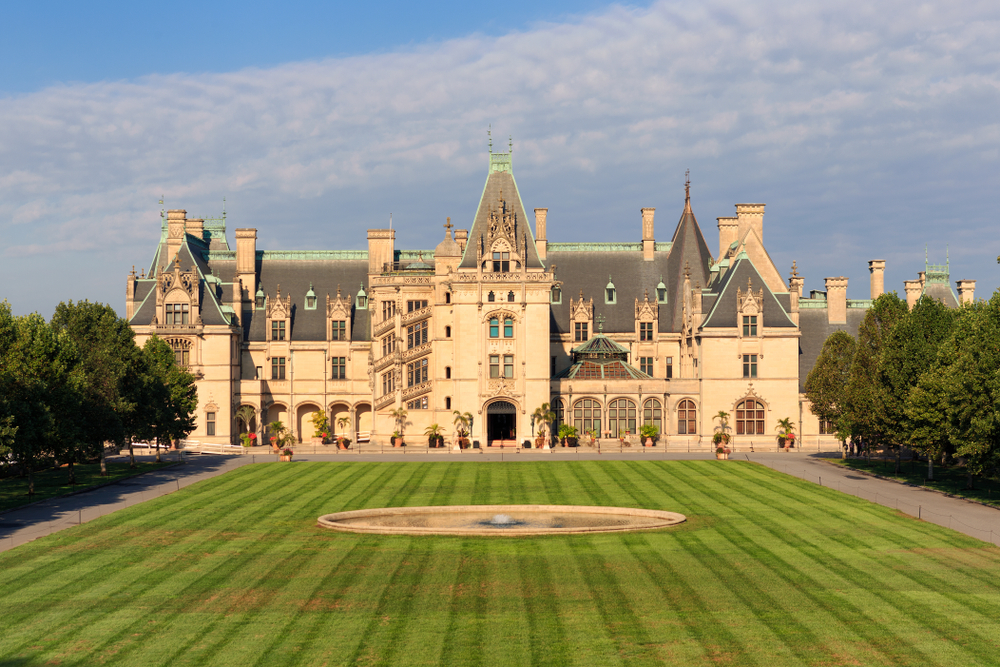
Stop 2: Explore The Gardens Surrounding The House
After touring the house, take some time to tour the grounds immediately around the house. There is a large decorative garden that has plants that change every season. There is a terrace, a vine tunnel, the large front lawn, and so much more.
Past the decorative seasonal garden there is a greenhouse where you can see exotic plants. It is packed with plants and a really cool place to explore, especially if you are visiting on a chilly day. You’ll want to stick fairly close to the house because lunch is next, and it is in the attached old stables.
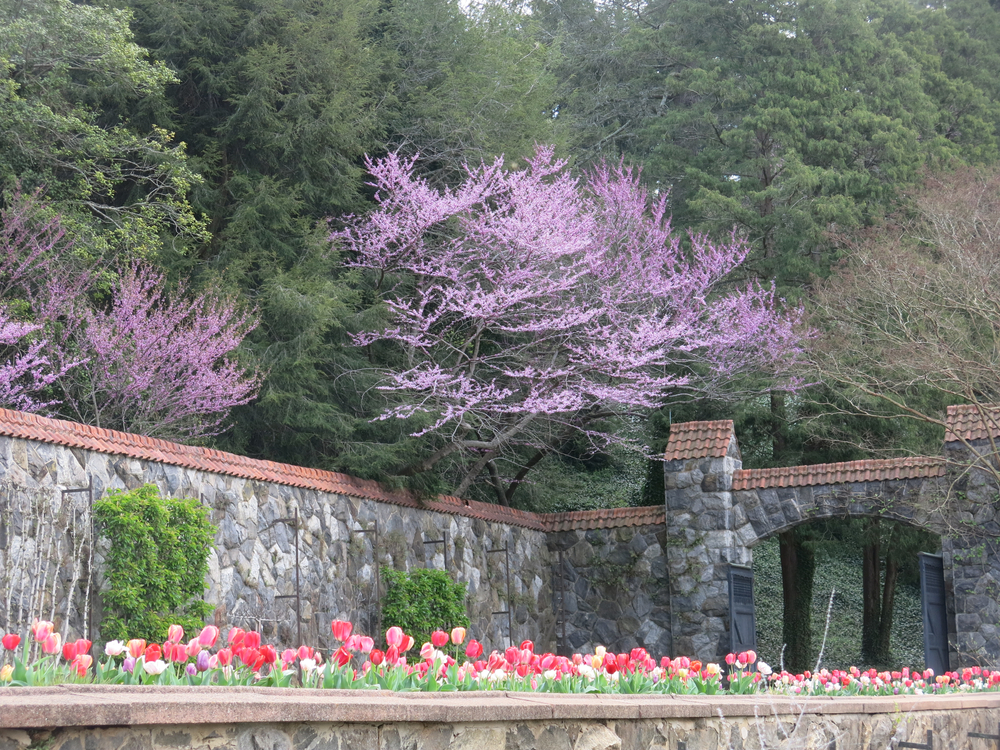
Stop 3: Lunch In The Stables
In the restored stables right next to the house there are a few shops and a great restaurant. The Stable Cafe offers light fare like burgers, bbq, and smoked meats. It is actually in the old stable stalls, which is really cool. We suggest getting reservations to ensure you don’t have to wait too long to be seated. Out of all the restaurants on the property, it is the most reasonably priced and you get a good portion of food.
In the courtyard that connects the stables and the house there is also a market for quick bites if you don’t want a longer lunch, a bake shop, and a dairy bar. The Dairy Bar offers ice cream, milkshakes, and sundaes. In the bake shop you’ll find locally made pastries and coffee and tea options.
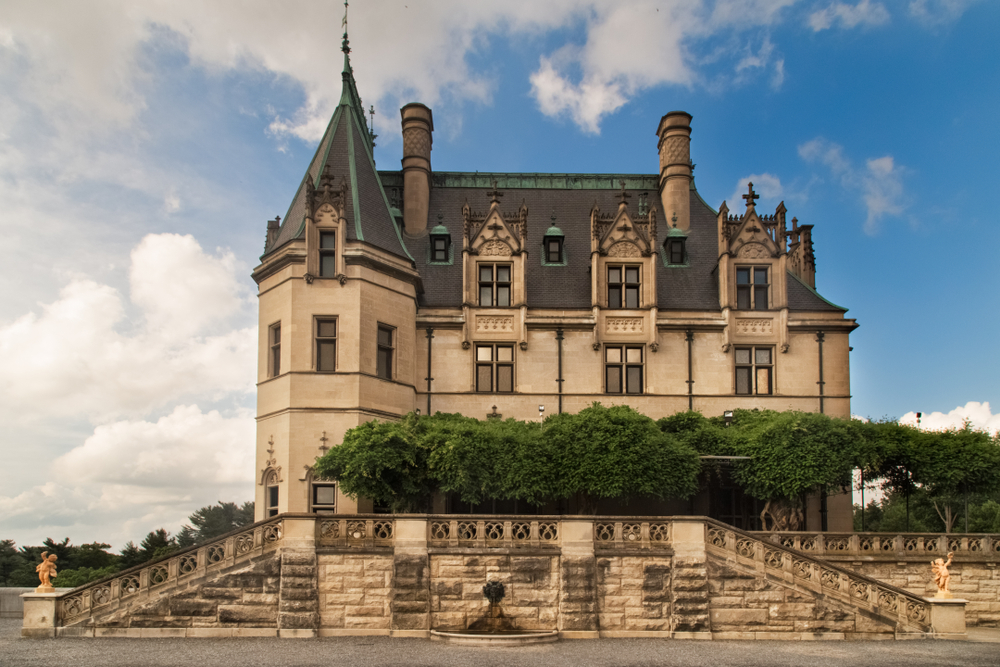
Stop 4: Explore The Hiking Trails On The Estate
After lunch, you can choose to go hiking. There are tons of hiking trails on the estate, and most of them are fairly easy. You’ll frequently find families with young kids exploring the woods near the estate. Depending on the time of year you visit, there may also be decorative set ups in the woods near the house that are fun to come across.
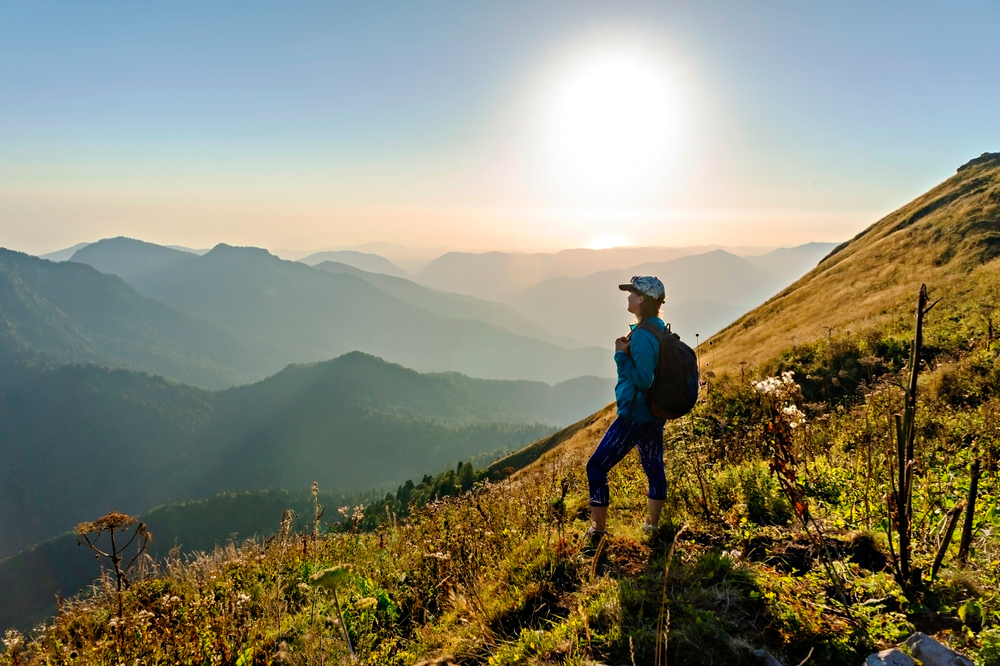
Stop 5: Shopping And Dinner Antler Hill Village
End your day at the Biltmore by taking the trolley down the hill to the Antler Village. The Antler Village is meant to represent what the kind of village center that typically would’ve been near an estate like the Biltmore in Europe. It has a large and luxurious hotel, dining options, shops, a winery where you can sample the estate’s wine for free, and a small museum.
The museum typically have exhibits that expand on the one you can find in the house. Antler Hill has several options for dinner, and they all range in price. They are also different styles of cuisine, so it’s pretty easy to find something that appeals to everyone. If the restaurant takes reservations, again, we highly recommend making reservations ahead of time.
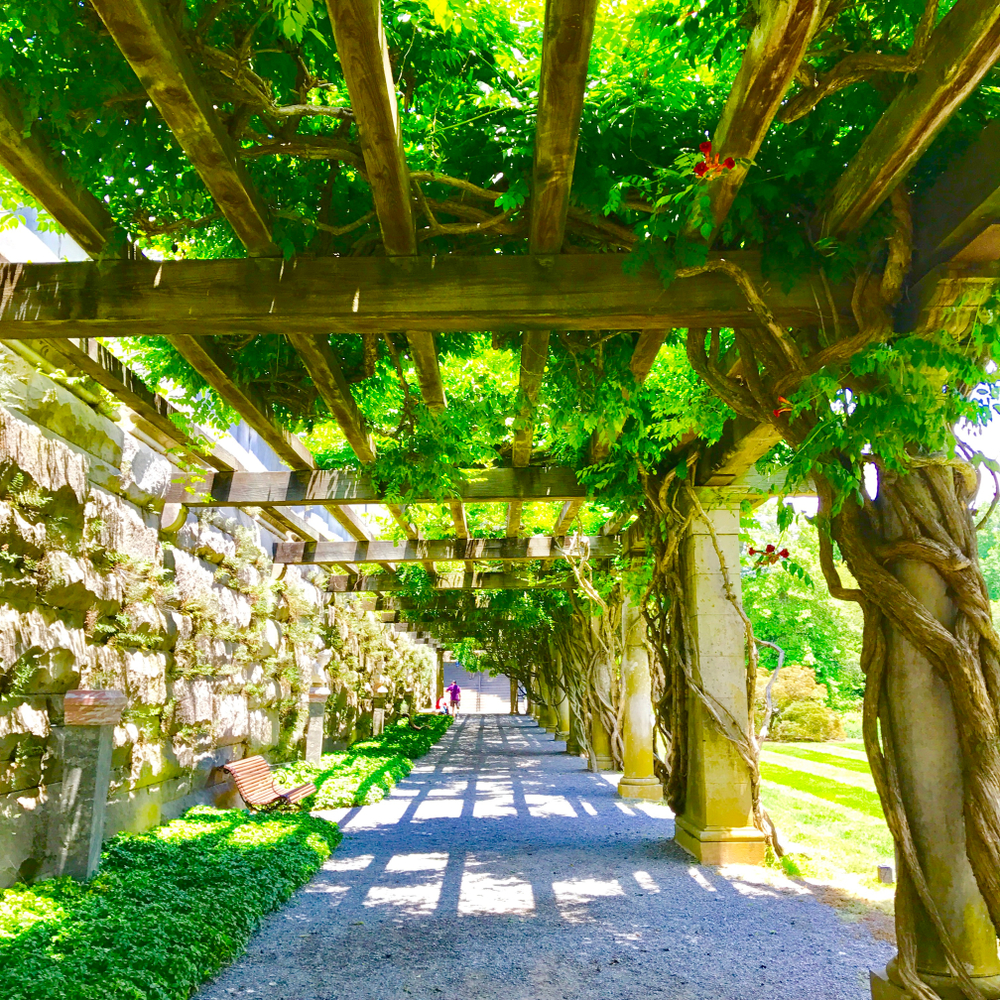
Stay At The Biltmore: booking.com
Head Home
Asheville is the natural stopping point for most people who drive the Blue Ridge Parkway. It’s the last major city in North Carolina on the parkway and it has an airport that you can easily fly out of. If you have more time, we’ve included two extra days of itineraries. The last day takes you about an hour outside of Asheville, so Asheville is still the best place for you to leave from if you flew in and rented a car to drive the parkway.
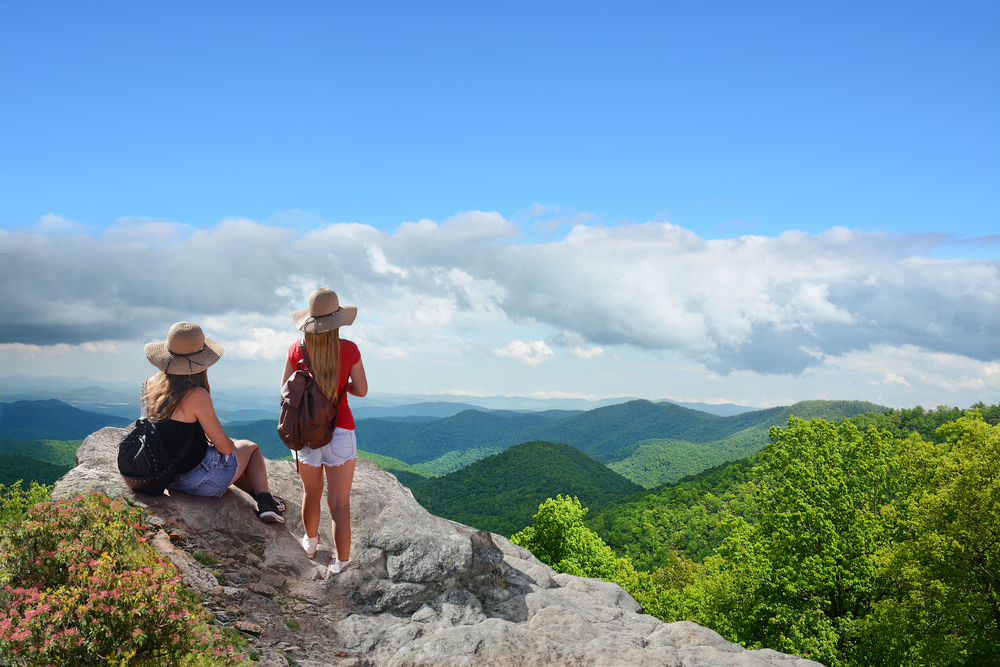
Optional Day 5: Second Day In Asheville
If the Biltmore Estate isn’t your thing, or you have time to spend an extra day exploring Asheville, then you’ll love this optional day. It is full of the best Asheville has to offer from amazing food, cool sights, and more.
Stop 1: Breakfast At The Rhu
One of Asheville’s most popular spots for breakfast is The Rhu. The Rhu is a café and bakery that is known for freshly made bread and pastries, amazing coffee and tea bar, and relaxed atmosphere. After a few days spent hiking and driving, it’s a great place to sit back and relax before exploring Asheville.

Stop 2: Shopping In Downtown Asheville
One of the best things to do in Asheville is explore the many shops and art galleries in Downtown Asheville. The city is known for being very artsy, so you’ll find lots of cool places to pop into. If you haven’t gotten a souvenir of your trip yet, Downtown Asheville is where you can find some one-of-a-kind items. Give yourself plenty of time to explore before heading to your next stop.
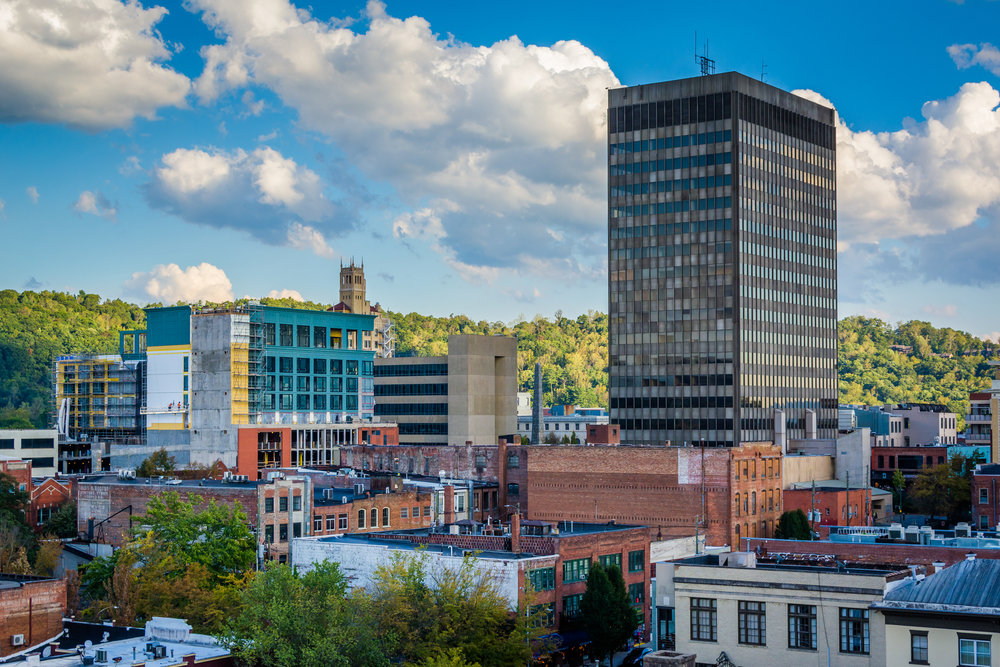
Stop 3: Basilica Of Saint Lawrence
While you’re in Downtown Asheville, think about taking a tour of the Basilica of Saint Lawrence. It is designed in the Spanish Baroque style and is an iconic landmark in Asheville. It opened in 1905 and became most known for it’s unique domed ceiling. The Basilica is said to have the largest free standing elliptical dome in North America. It is a beautiful example of architecture and is considered one of the shining jewels of Downtown Asheville.
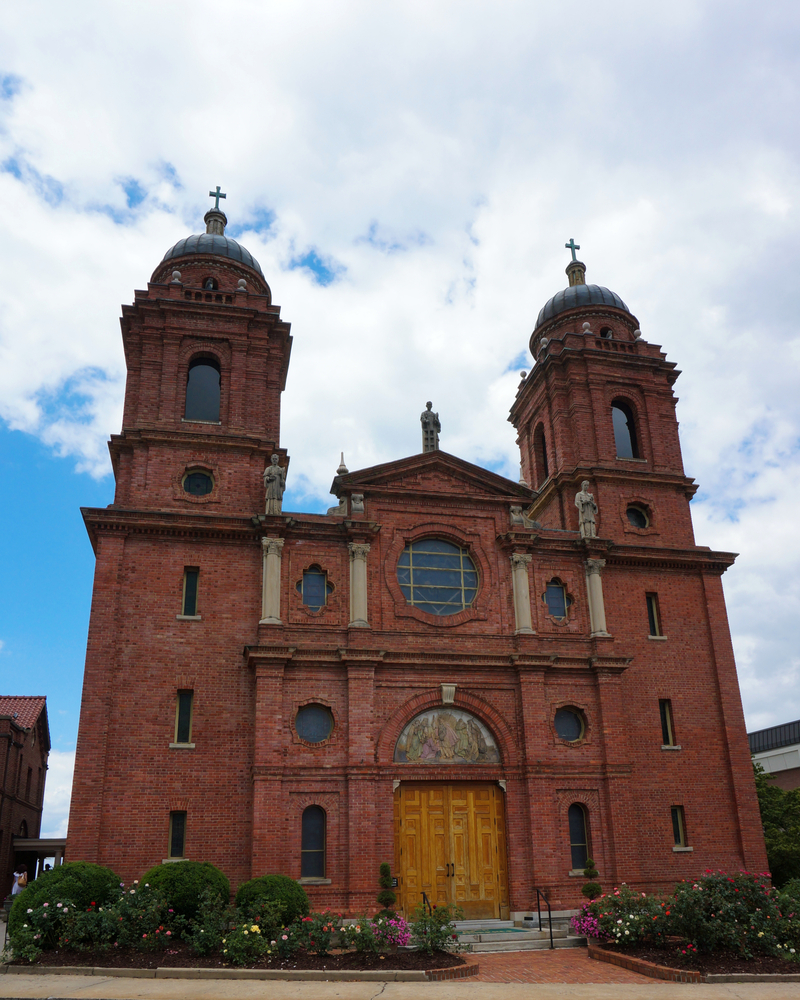
Stop 4: Check Out One Of Asheville’s Unique Museums
Asheville also has some really cool museums you can explore. It has your standard museums, like a Science Museum and an Art Museum. But it also has a Radio Museum and a Pinball Museum. At the Pinball Museum you can actually play the many retro and antique pinball machines. Its a really unique place to explore and it makes for a really fun afternoon of pinball.

Stop 5: Go On A Brewery Tour
End your exploration of Asheville with a Brewery Tour. Asheville is quickly becoming known for it’s many independent breweries. There are a few companies that offer walking Brewery Tours, or you can pick one and go on a tour of that individual brewery. Most of the breweries in Asheville also have full menus, so they are a great place to get dinner as well.
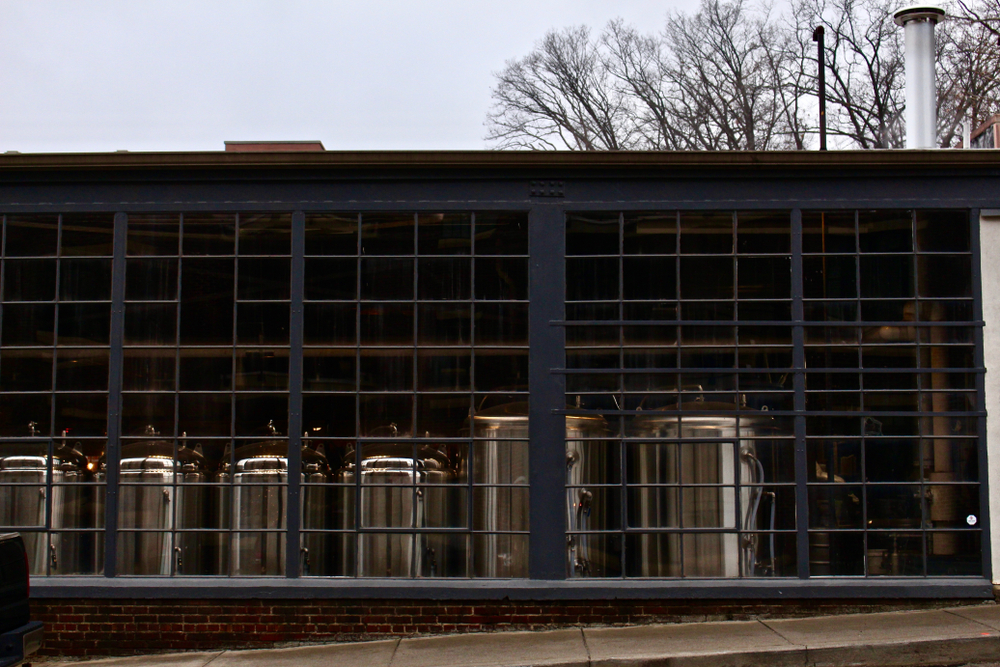
Optional Day 6: Asheville to Great Smoky Mountains National Park
Asheville is not the end of the Blue Ridge Parkway. If you want to drive all the way to the end of the parkway, then add day six to your Blue Ridge Parkway itinerary. You’ll only drive about an hour away from Asheville, so it will still be your home base for things like dinner and accommodations. This last leg of the parkway could easily be done in a morning before an evening flight if you wanted to.
Stop 1: Mount Pisgah At Milepost 408.6
From Asheville, hop back onto the parkway until you reach Milepost 408.6 where the Mount Pisgah visitor’s center is. If you don’t want to hike around Mount Pisgah, you can just admire it at one of the overlooks. The best view is at the Mount Pisgah Overlook which is at Milepost 407.6. This is also where you’ll find the trail head for the Mount Pisgah Trail.
There is another trail you can take at the visitor’s center at Milepost 408.6. Hikers are warned to beware of rapidly changing weather in the area and black bears. So if you just want to admire the mountain, no one will blame you for moving on to the next stop.
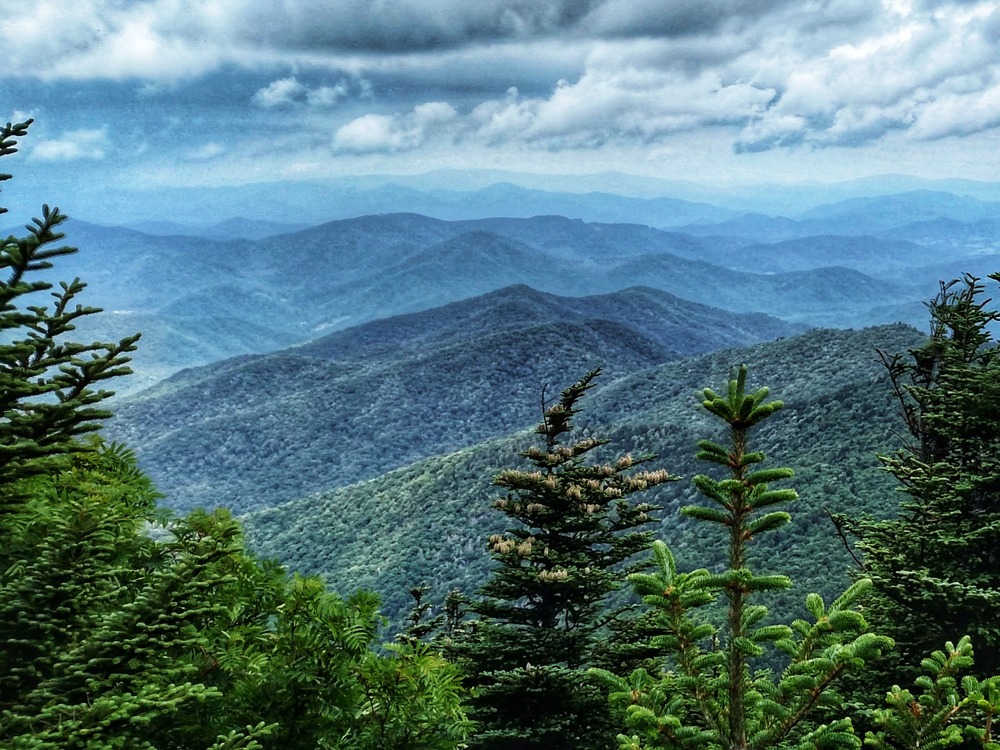
Stop 2: Graveyard Fields At Milepost 418.8
At Milepost 418.8 you’ll find the very unique view of Graveyard Fields. The Graveyard Fields are large expanses of nothing but grass. This is a very uncommon landscape amongst the Blue Ridge Mountains. There are a few theories as to why there are no trees growing in the area, but no one is quite sure why the area remains nothing but grass. Its a really cool spot because it is so unique and it’s a great place to get out and walk around if the threat of black bears at Mount Pisgah scared you off.
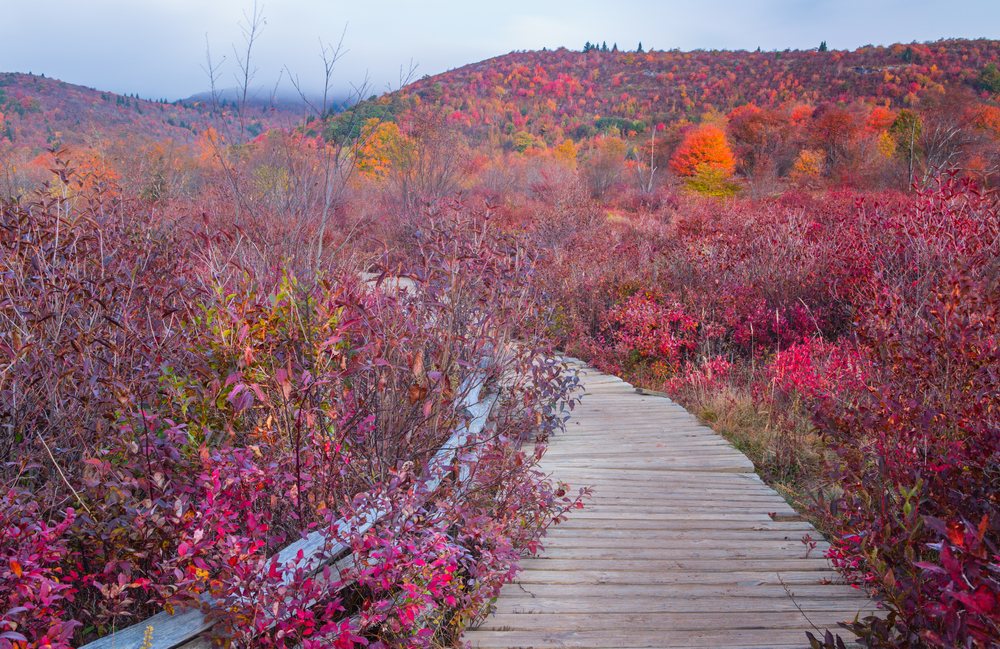
Stop 3: Richland Balsam Overlook At Milepost 431.4
Not much father down the parkway is the Richland Balsam Overlook at Milepost 431.4. The Richland Balsam Overlook is the highest point of the parkway at 6,053 feet. It is a beautiful overlook that gives you sweeping views of the Southern Appalachian Mountains. Its a great spot to take a photo of the sign indicating the elevation and it’s a popular overlook.
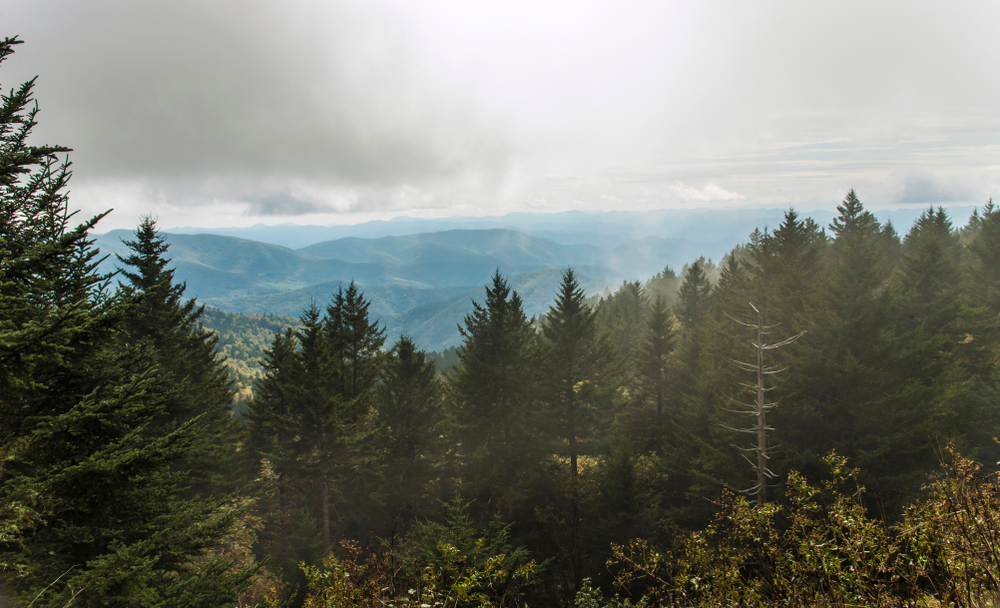
Stop 4: Museum Of The Cherokee Indian And The Entrance To The Great Smoky Mountains National Park
This is your very last stop on the Blue Ridge Parkway drive. In Cherokee North Carolina you can find the Museum of the Cherokee Indian. It is a great place to learn more about the original peoples of North Carolina and the Appalachian Mountains. Take some time to explore the Museum.
The purpose of the Blue Ridge Parkway is to connect Shenandoah National Park with the Great Smoky Mountain National Park in Tennessee. So, it makes sense that where the Blue Ridge Parkway ends, the Great Smoky Mountain National Park begins. If you want, you can venture into the area of the park where the parkway ends, but you don’t have to. You’ve now driven the entire Blue Ridge Parkway, so you can head back to Asheville and home.
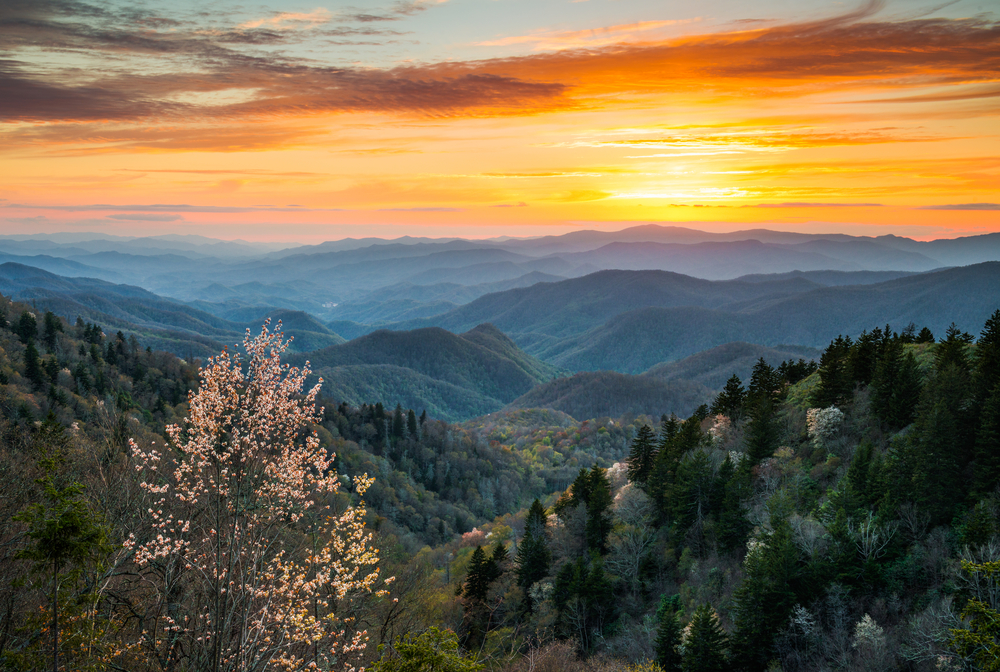
There is a reason every year people travel from all over the world to experience the Blue Ridge Parkway drive. It is a beautiful part of the country that is full of unique and exciting places to explore and enjoy. If you decide to take a Blue Ridge Parkway road trip, no matter how long you have to explore, you won’t regret it. It is a place that will always enchant visitors who get to experience the natural beauty of the Appalachian and Blue Ridge Mountains.

 14 Prettiest Waterfalls in Tennessee
14 Prettiest Waterfalls in Tennessee